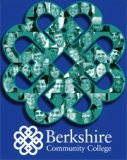Professor Jeffrey Henriques, Dept of Psychology, University of Wisconsin, has used Clickers since 2004, and shares some approaches: (Full article at: http://bit.ly/91xw58)
“Henriques said he typically asks four to six questions during a class period in which he uses the clickers for response. The purposes of the questions are many:
- As a concept check to see what students understand about a topic. “This gives me immediate feedback on my teaching and allows me to see if I need to go over a concept again to help students understand the material better,” he said. “Likewise, the clicker questions allow the students to assess their own understanding of the material, and they can see how they compare to their classmates. For instance, if they got a question wrong, were there many other students who also had difficulty with the material or were they one of the few who didn’t understand the question?”
- To describe a research study to the students and have them predict what the outcomes will be of the experiment. “This engages their critical thinking skills,” Henriques explained. “Can they apply what they have learned in class to a research question? At other times [the poll] allows me to show students how a study’s findings go against the commonsense explanation for what would happen.”
- To demonstrate different psychological concepts. “I use this specifically in the area of cognition and problem solving, demonstrating ideas such as the availability heuristic by asking students if they think that there are more words in the English language that start with the letter ‘k’ or more words that have ‘k’ as the third letter,” he said. “While it is easier to think of words that start with the letter ‘k’ and that leads us to conclude that there are more such words in the English language, it is the case that there are three to five times as many words that have ‘k’ as the third letter.”
- To get students thinking about the material they’re about to cover in class. “For instance, I may ask them a question that they can’t correctly answer prior to the lecture but should be able to understand and answer correctly once we finish covering the material,” Henriques said. “Other times I will ask them to reflect on their own experiences as a way to help them understand how the different theories arose that we are about to discuss. I just did this in my lecture on emotion, asking students to think about the last time that they had a strong emotional response and whether the feeling of emotion preceded, followed, or coincided with the physiological feelings of emotion.”
- To give students practice with the types of questions that they are going to encounter on exams in the course. “Oftentimes incoming students expect that college exams are going to be similar to high school exams–simple regurgitation of facts,” he said. “But I want my students to be able to apply the ideas that we are talking about in class. These in-class questions can help them start thinking in those ways before they encounter their first exam.
- To poll students about their behavior, “such as how many hours of sleep they get in a night as a lead-in to that course topic,” Henriques explained.”
